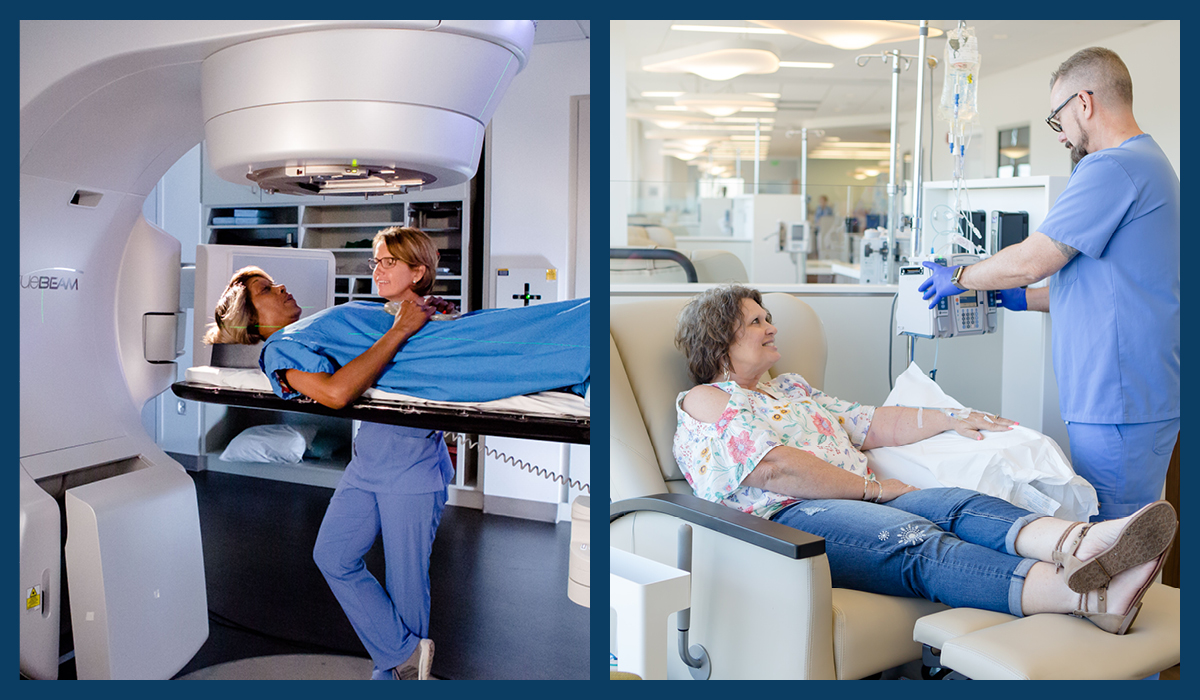Radiation vs Chemotherapy: What’s the Difference?

Cancer treatment often raises an important question among patients and their families: Radiation vs chemotherapy – what’s the difference? While both are powerful tools in the fight against cancer, they work in very different ways, and understanding the difference between chemotherapy and radiation can help patients make informed decisions about their care.
Understanding the Basics: Chemotherapy vs Radiation Therapy
How Does Chemotherapy Work?
Chemotherapy uses drugs to kill cancer cells. These drugs circulate throughout the body, targeting rapidly dividing cells. Because it travels through the bloodstream, chemotherapy is a systemic treatment, meaning it affects cancer cells wherever they may be in the body.
- Systemic reach: Useful for cancers that have spread (metastasized).
- Multiple drug options: Various combinations can be tailored to specific cancer types.
- Targets rapidly dividing cells, including some healthy cells, leading to side effects.
How Does Radiation Therapy Work?
Radiation therapy uses high-energy beams to target cancer cells. These beams are precisely focused on a specific area, making radiation therapy a local treatment.
- Localized treatment: Targets a specific tumor site.
- Minimizes exposure to healthy tissues compared to chemotherapy.
- Can be delivered externally (external beam radiation) or internally (brachytherapy).
Key Differences Between Chemotherapy and Radiation
| Aspect | Chemotherapy | Radiation Therapy |
|---|---|---|
| Type of Treatment | Systemic | Localized |
| Delivery Method | Oral, intravenous, injection | External beams or implanted sources |
| Target | Throughout the body | Specific tumor or area |
| Common Side Effects | Hair loss, nausea, fatigue | Skin irritation, fatigue, localized pain |
| Use in Cancer Treatment | Alone or with radiation/surgery | Alone or with chemotherapy/surgery |
| Goal | Cure, control, or palliation | Cure, control, or palliation |
Chemotherapy and Radiation Side Effects
Side Effects of Chemotherapy Include:
- Hair loss
- Nausea and vomiting
- Fatigue
- Risk of infection
- Mouth sores
- Appetite changes
Because chemotherapy drugs circulate throughout the body, healthy fast-dividing cells (like those in hair follicles or the digestive tract) are also affected.
Side Effects of Radiation Therapy Depend on the Area Treated:
- Skin redness or irritation
- Fatigue
- Localized hair loss
- Sore throat (if head/neck area is treated)
- Digestive issues (if the abdomen is treated)
How each therapy affects healthy cells is a critical part of treatment planning. Doctors aim to maximize cancer cell destruction while minimizing harm to normal tissue.
Goals of Chemotherapy and Radiation: Cure, Control, and Palliation
Both therapies share similar goals:
- Cure: Eradicating cancer completely
- Control: Slowing or stopping cancer growth
- Palliation: Relieving symptoms when a cure is not possible
Often, chemotherapy and radiation can be used together or separately, depending on the cancer type, stage, and overall treatment plan.
When Is Chemotherapy Preferred vs When Is Radiation Therapy Preferred?
Chemotherapy is preferred when:
- Cancer has spread beyond the original site
- Systemic treatment is required
- Cancer is blood-related (like leukemia or lymphoma)
Radiation therapy is preferred when:
- The tumor is localized
- Surgery is not possible or needs support
- Specific symptoms (like pain or bleeding) require targeted relief
In many treatment plans, a combination of chemotherapy vs radiotherapy is recommended to increase effectiveness.
Treatment for Cancer: Chemotherapy, Radiation, or Both?
Choosing the right treatment depends on many factors:
- Type and stage of cancer
- Patient’s age and overall health
- Location of the tumor
- Treatment goals (cure, control, palliation)
Doctors often use a multidisciplinary approach involving oncologists, radiation therapists, and surgeons to develop a tailored plan.
Systemic vs Local Cancer Treatment: Summary
- Chemotherapy is a systemic treatment: Works throughout the body
- Radiation therapy is a local treatment: Targets specific tumor areas
- Combination therapy: Offers synergistic benefits in certain cases
FAQs: Radiation vs Chemotherapy
Q: What is the difference between chemotherapy and radiation?
A: Chemotherapy is a systemic treatment using drugs that affect the entire body, while radiation therapy is a local treatment that targets a specific area using high-energy beams.
Q: How does chemotherapy work?
A: Chemotherapy drugs circulate through the bloodstream, attacking fast-dividing cancer cells throughout the body.
Q: How does radiation therapy work?
A: Radiation therapy delivers targeted beams of high energy to shrink or destroy cancer cells in a specific location.
Q: What are the side effects of chemotherapy and radiation?
A: Side effects of chemotherapy include hair loss, nausea, and fatigue. Radiation side effects depend on the area treated and may include skin irritation and localized discomfort.
Q: Can chemotherapy and radiation be used together?
A: Yes, depending on the cancer type and stage, both therapies may be used in combination to improve outcomes.
Q: When is chemotherapy preferred over radiation?
A: Chemotherapy is preferred when cancer has spread or when systemic treatment is needed.
Q: Is radiation therapy painful?
A: Radiation therapy itself is not painful, but it can cause fatigue and localized side effects depending on the treatment area.
